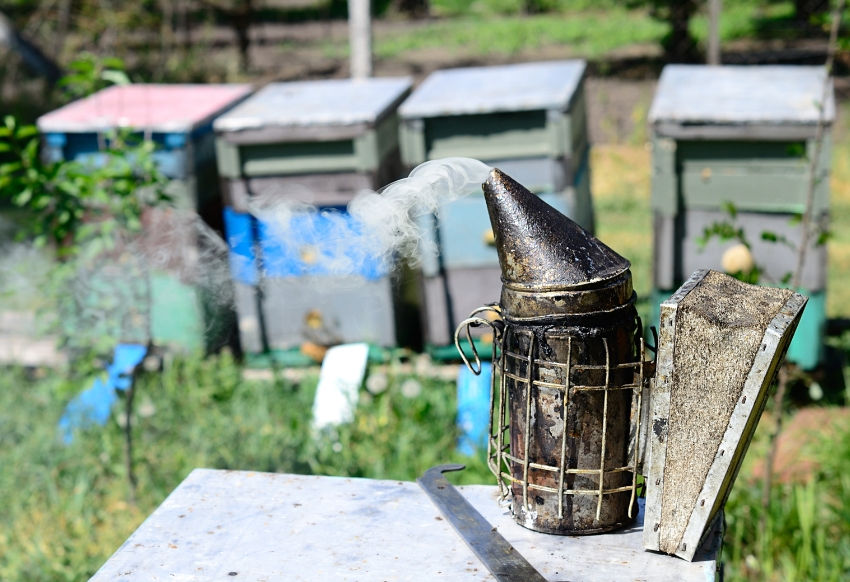How To Spot Fake Honey
- Dec 25, 2023
- 4 min read

The amber hues of honey have graced tables and kitchens for centuries, but in the modern era, the choice between commercially produced honey and real honey from local beekeepers isn't often as straight forward as it may seem.
This blog aims to unravel the compelling reasons behind why you should choose local honey and delve into the clandestine world of counterfeit honey. By understanding why you should turn to your local beekeeper and honing the ability to spot fake honey, you help to protect yourself from the shady world of food fraud!

The Case for Local Honey: A Symphony of Flavour and Ethics
Exceptional Flavour Profiles and Unmatched Quality: The first and foremost reason to champion local honey lies in the exceptional flavour profiles and unmatched quality that it offers. Unlike mass-produced honey, which often undergoes excessive processing and filtration, local beekeepers typically adopt traditional and sustainable beekeeping practices.
Supporting Local Beekeepers and Sustainable Practices: Opting for honey from local beekeepers extends beyond a mere culinary choice; it's a conscious decision to support sustainable practices and the guardians of our local ecosystems. Local beekeepers are often small-scale entrepreneurs deeply connected to their communities.
Community Empowerment: The purchase of local honey is a direct investment in the economic vibrancy of local communities. Unlike faceless corporations, local beekeepers are individuals deeply rooted in the regions they serve.

Spotting Fake Honey: Navigating the Honeycomb of Deception
While the allure of local honey beckons, the market is unfortunately rife with counterfeit products claiming to be pure honey. To shield yourself from these impostors, consider the following tell-tale signs:
Read the Label: Authentic honey labels should provide a wealth of information, including the origin of the honey, the specific floral sources, and details about the beekeeping practices. Be wary of vague or generic labels, as they often indicate a lack of transparency in the honey's journey from hive to bottle.
If you want to guarantee you are buying local honey from the UK, look at the back of the label. It will say Product of the UK or Product of England/Wales/Scotland etc. Regardless of the company brand, if it says Product of Non EU countries, it's basically coming in from China, the largest honey exporter in the world. This doesn't mean its necessarily fake, it just might not be subject to same intense scrutiny and regulations that you might find elsewhere in the world.

Check for Crystallisation: Although it might put you off, authentic honey tends to crystallise over time. While commercially produced honey may resist crystallisation due to the ultra-fine filtration processes it undergoes, local honey is more likely to develop natural crystals. This occurrence is a positive sign, indicating minimal processing and the presence of genuine floral nectar.
This really is a very good indicator. ALL real honey will eventually crystallise as honey is a super saturated solution of natural sugars. It crystalises to protect itself from fermentation and spoilage. When you see honey that remains crystal clear for months and even years, this is a sign its been processed for that very purpose. To maintain its shelf appeal for as long as possible. Crystallised honey can easily be returned to liquid by gently heating in water around 40c.

Perform the Water Test: A simple water test can help you discern the purity of honey. Place a spoonful of honey in a glass of water. If the honey dissolves quickly, it likely contains high levels of added moisture, suggesting dilution. Pure honey tends to settle at the bottom of the glass without dissolving rapidly. This is an excellent test. The results of some supermarket honey may well surprise you. Give it a go!

Examine the Consistency: Authentic honey exhibits a certain viscosity and thickness. If the honey appears overly thin or runny, it may be an indication of added water or syrup. Genuine honey has a distinct texture that reflects the natural density of concentrated nectar.
Temperature Test: Real honey has a low water content, which makes it less prone to conductivity. Place a drop of honey on your thumb and check if it quickly absorbs into the skin. If it does, the honey is likely pure. Fake honey, often containing higher water content, may feel stickier and not absorb as readily.
Consider the Source: When purchasing honey, opt for reputable sources, such as farmers' markets, local co-ops, or directly from beekeepers. These avenues prioritise transparency, and the likelihood of encountering fake honey is significantly reduced.

Taste it: This is best test you can do. Real honey doesn't just taste sweet and every jar tastes different. You can taste the wildflowers that the bees have foraged on in every spoonful. If your honey just tastes of sugar and every single jar is identical, you are missing out on one of the most incredible foods this world has to offer. We often keep a jar of bog standard, cheap supermarket honey and do blind tests at farmers markets. In over 10 years of doing these tests, no-one has ever said they preferred the cheap, ultra processed honey that been imported from China.

Conclusion:
As the choice between local honey and commercial alternatives becomes increasingly significant, the informed consumer emerges as a guardian of both taste and authenticity. Local honey not only tantalises the palate with its unrivalled flavours but also represents a commitment to ethical consumption, environmental stewardship, and community support.
By arming yourself with the knowledge to identify counterfeit honey, consumers can actively participate in preserving the integrity of this timeless and cherished natural treasure. In doing so, we honour the symbiotic dance between bees and flowers, ensuring that the golden elixir they create continues to grace our tables with purity and authenticity.
If you want to buy some REAL UK Honey check out our range at Black Mountain Honey - BUY HERE














Comments